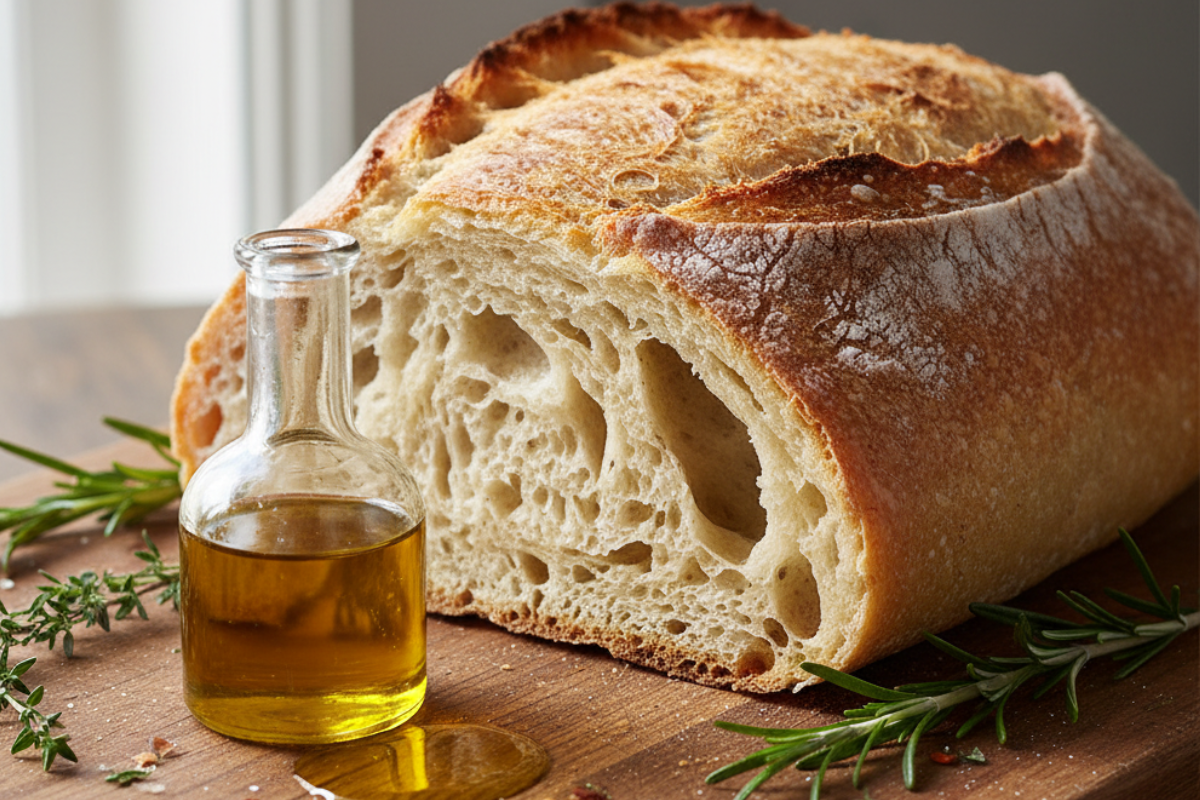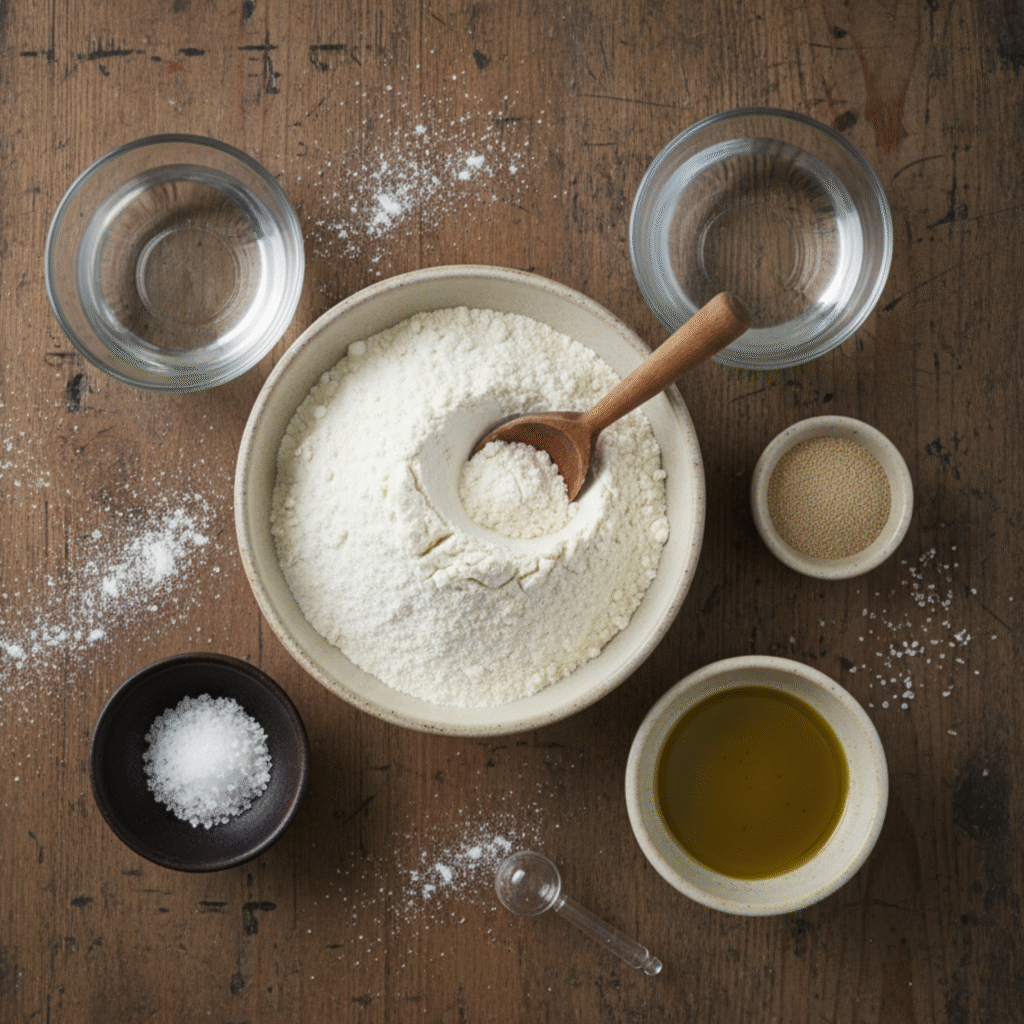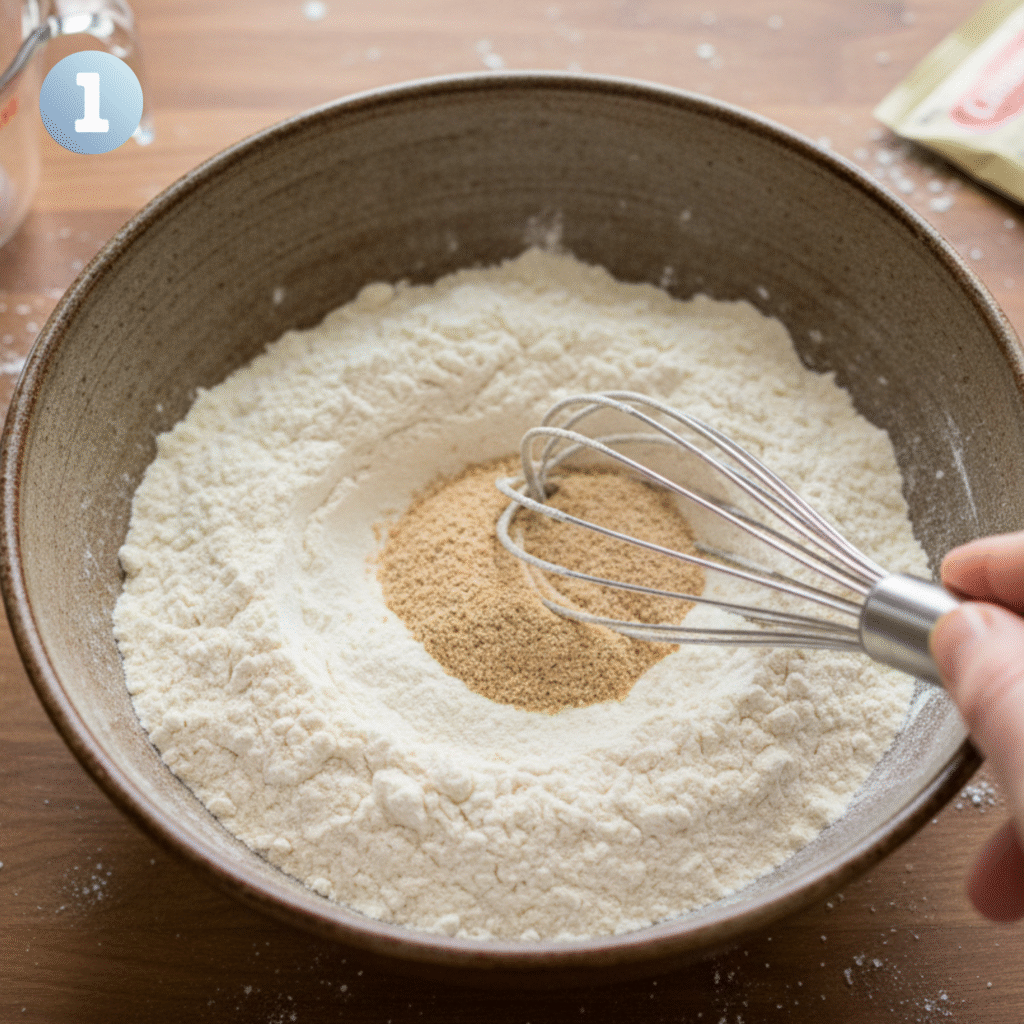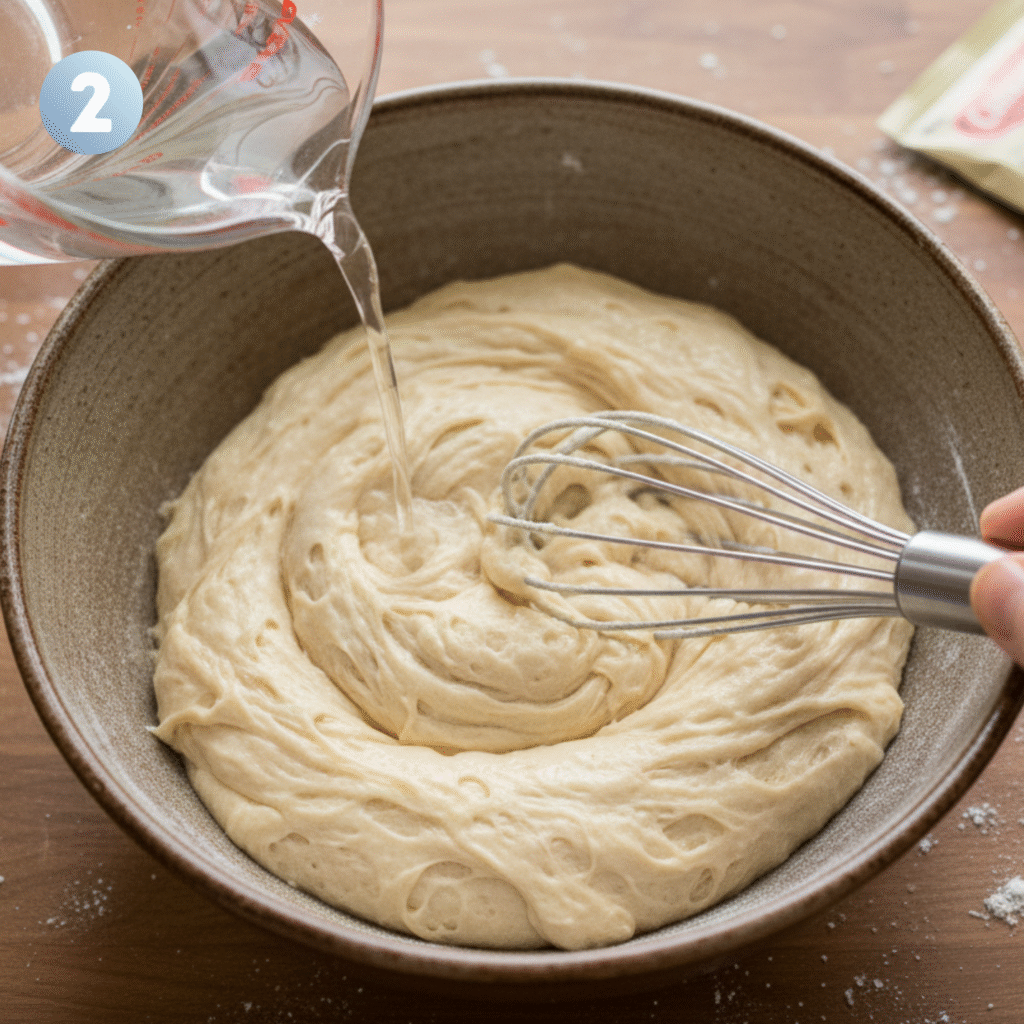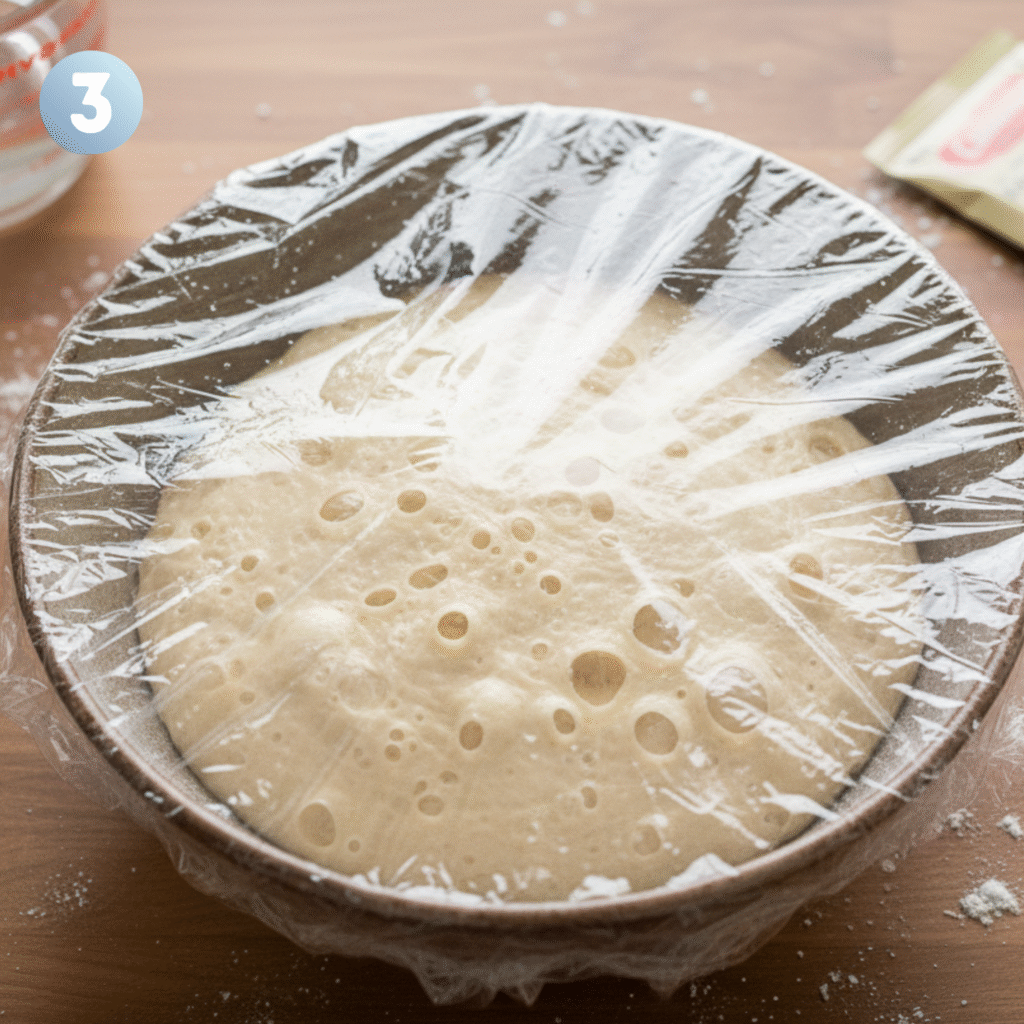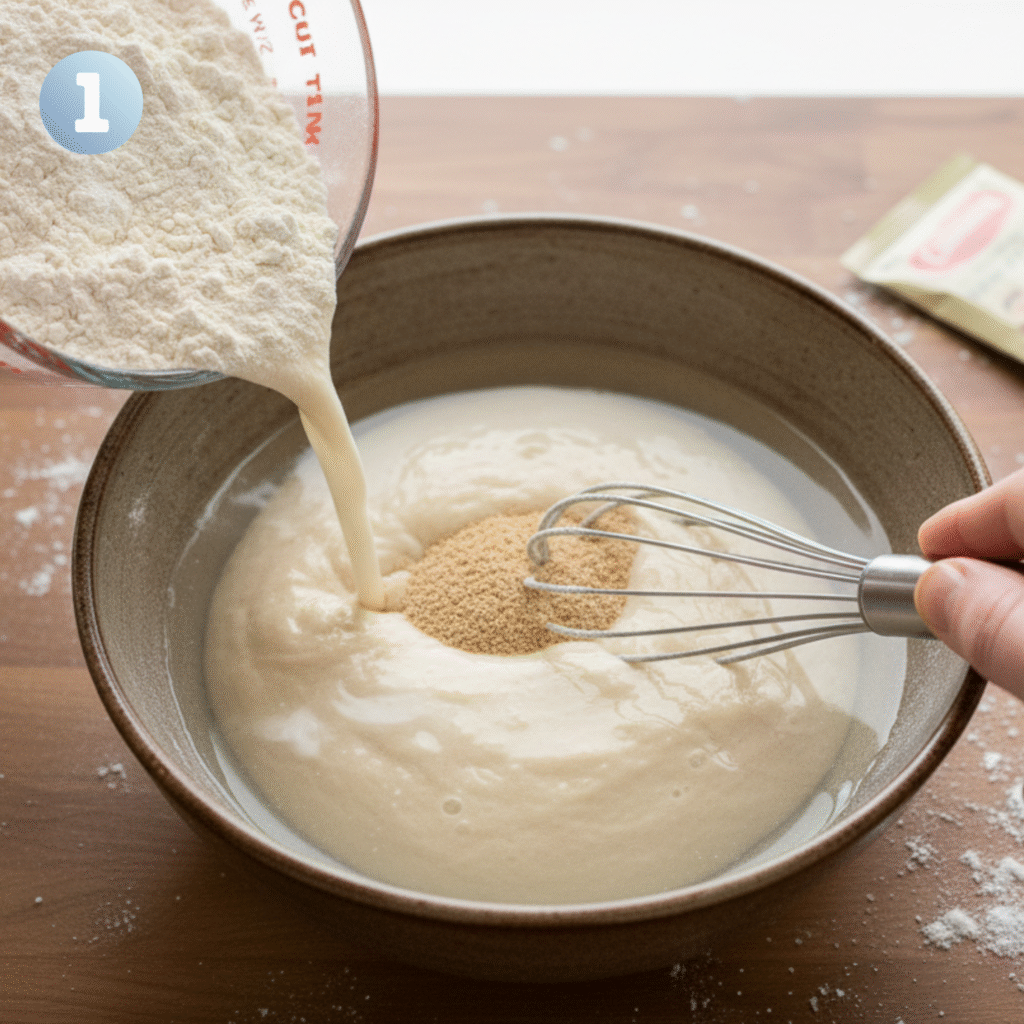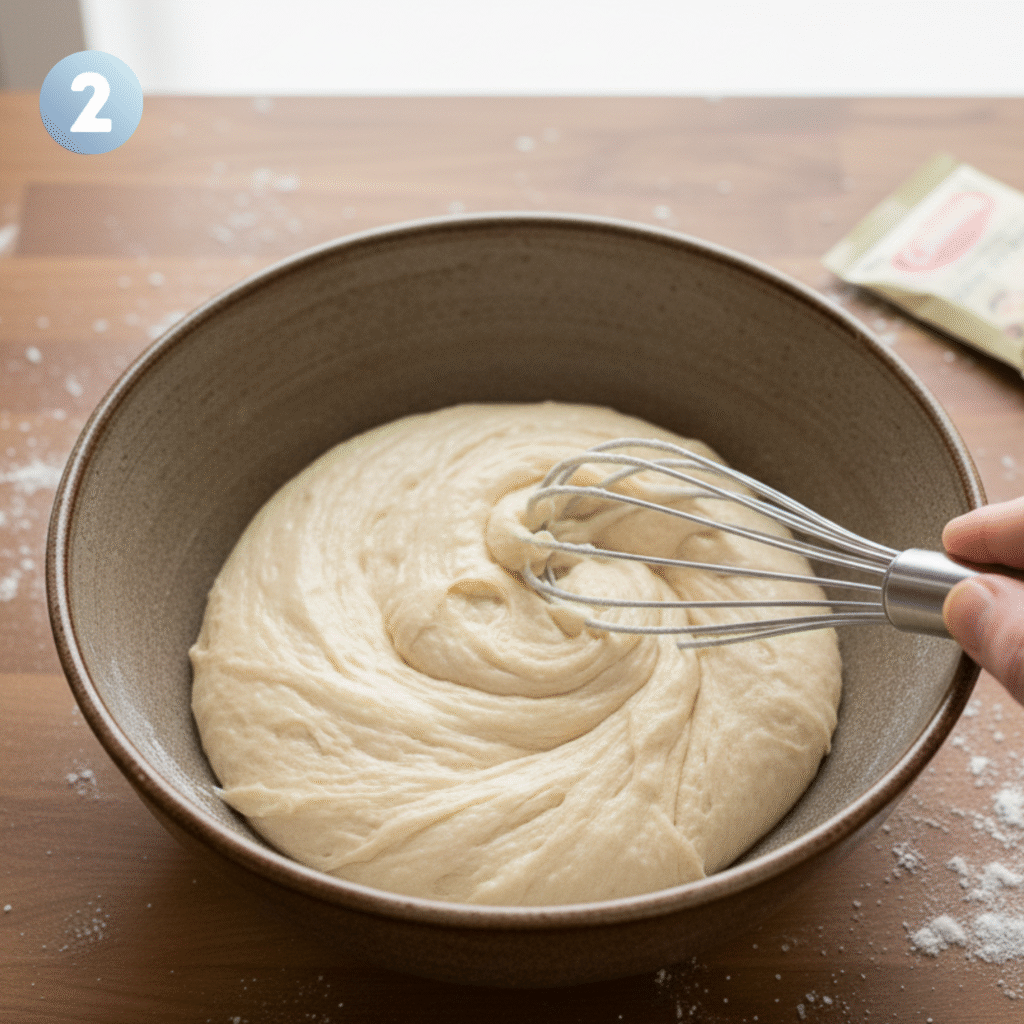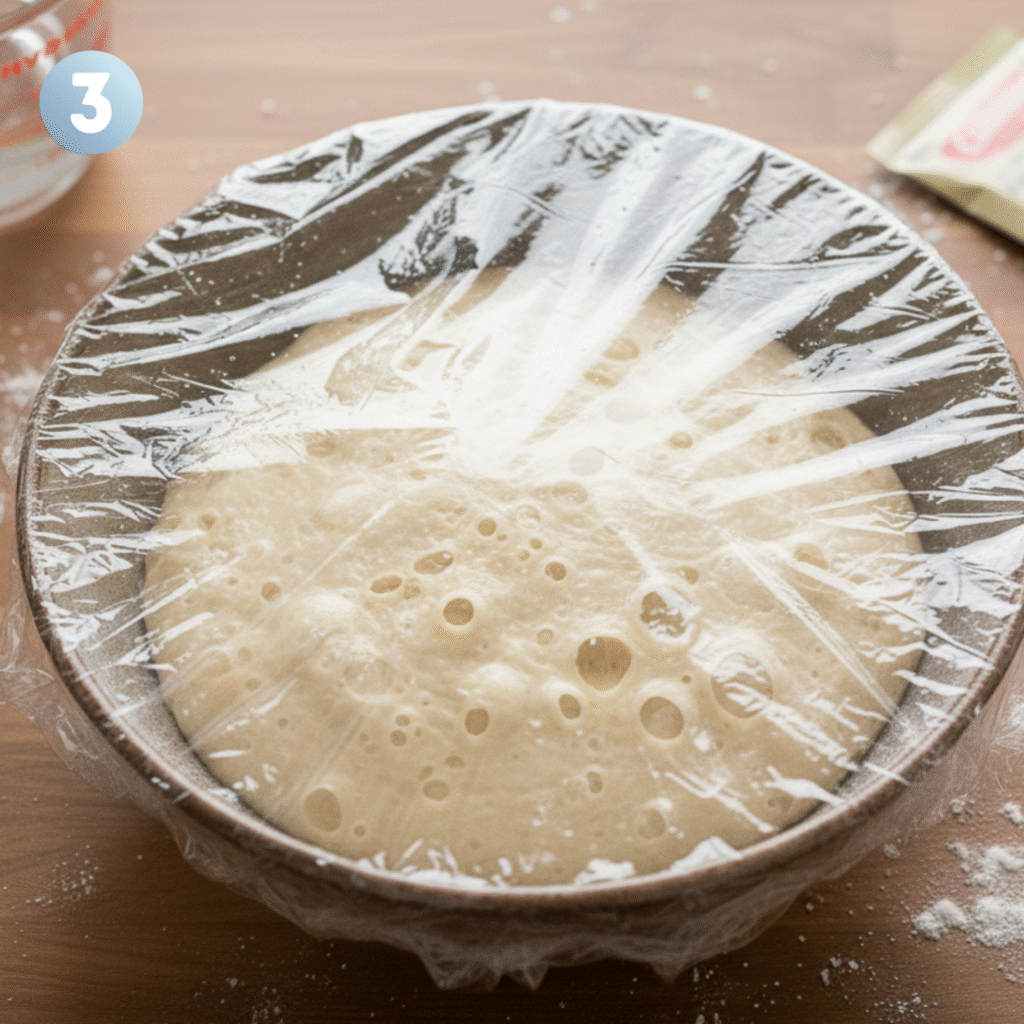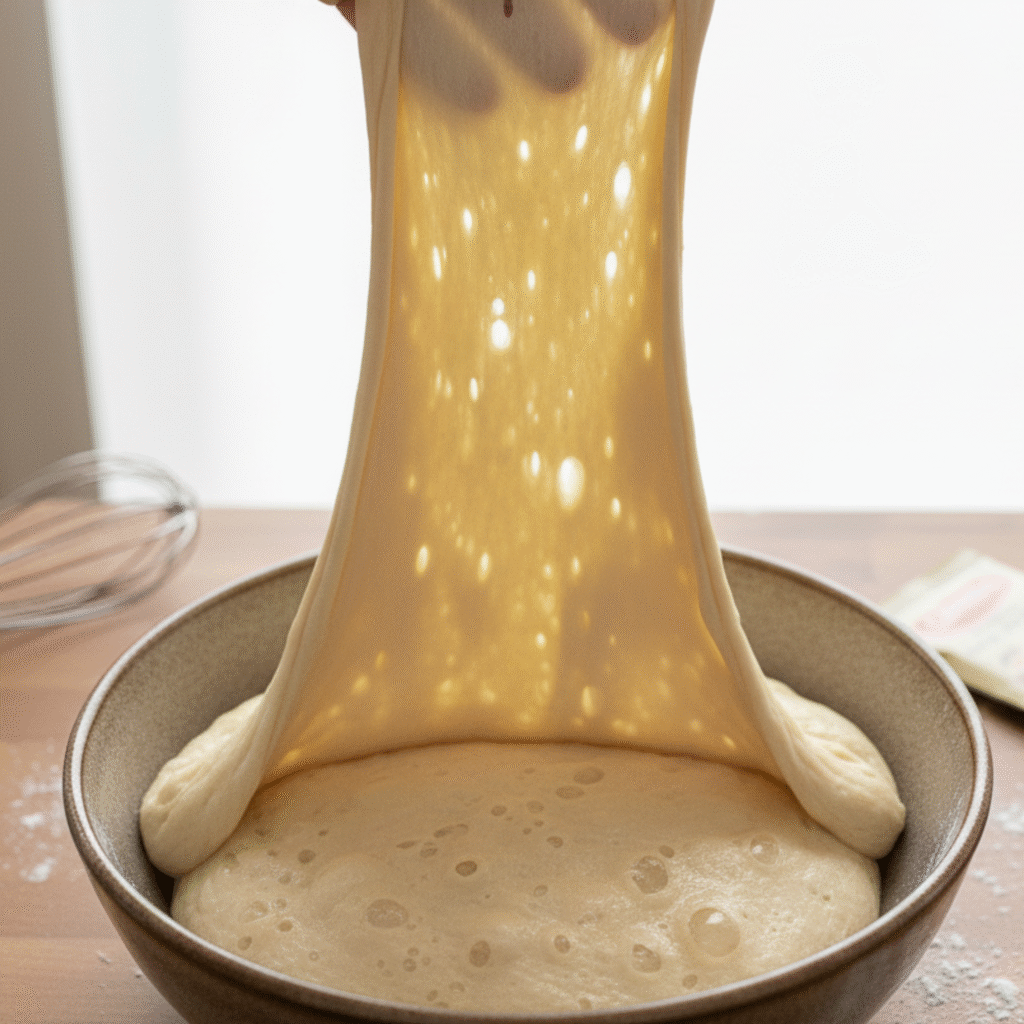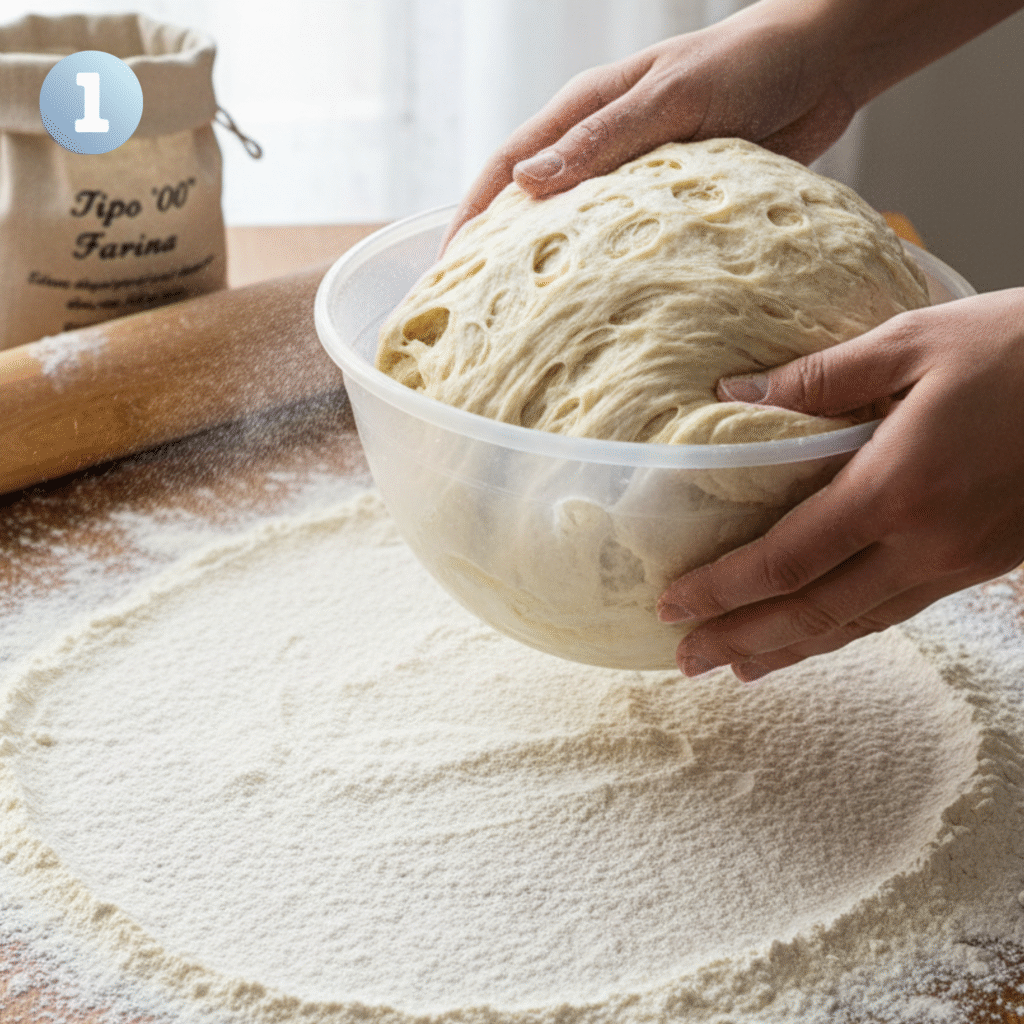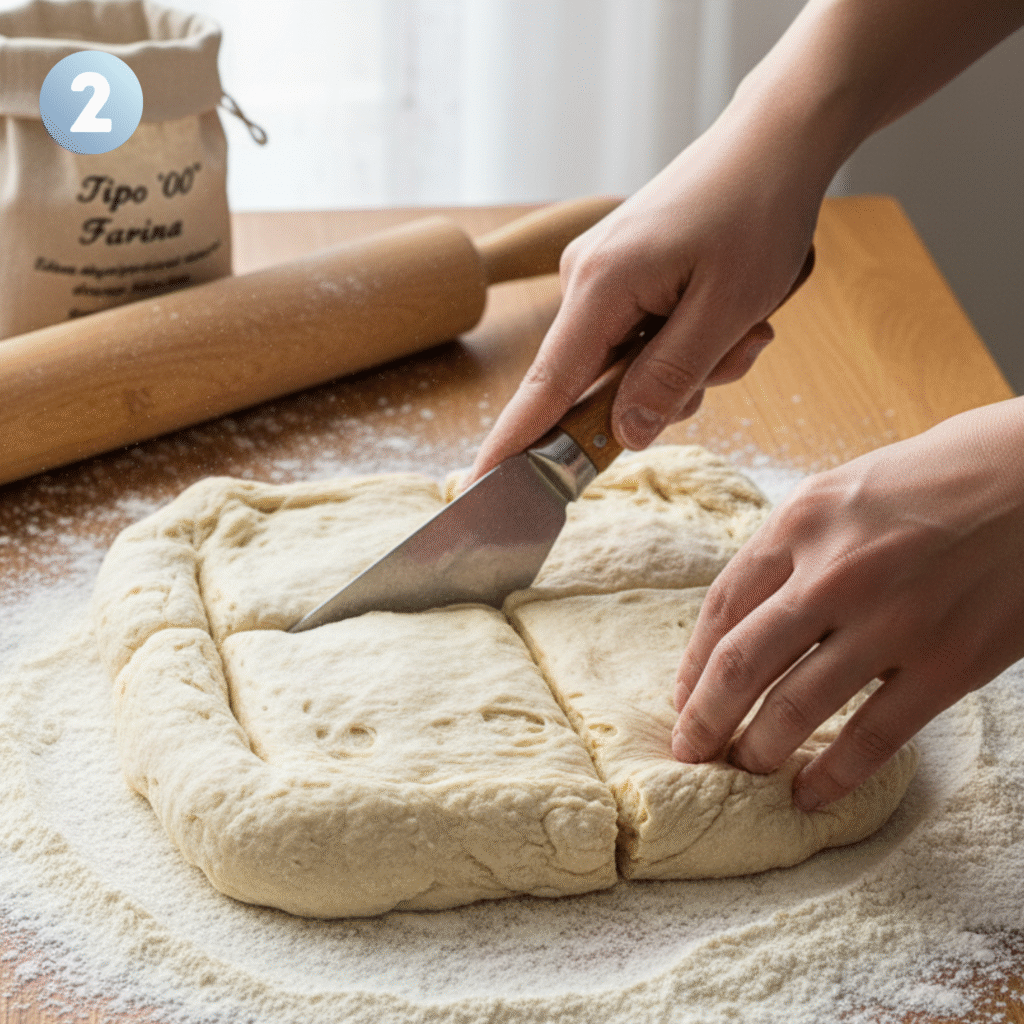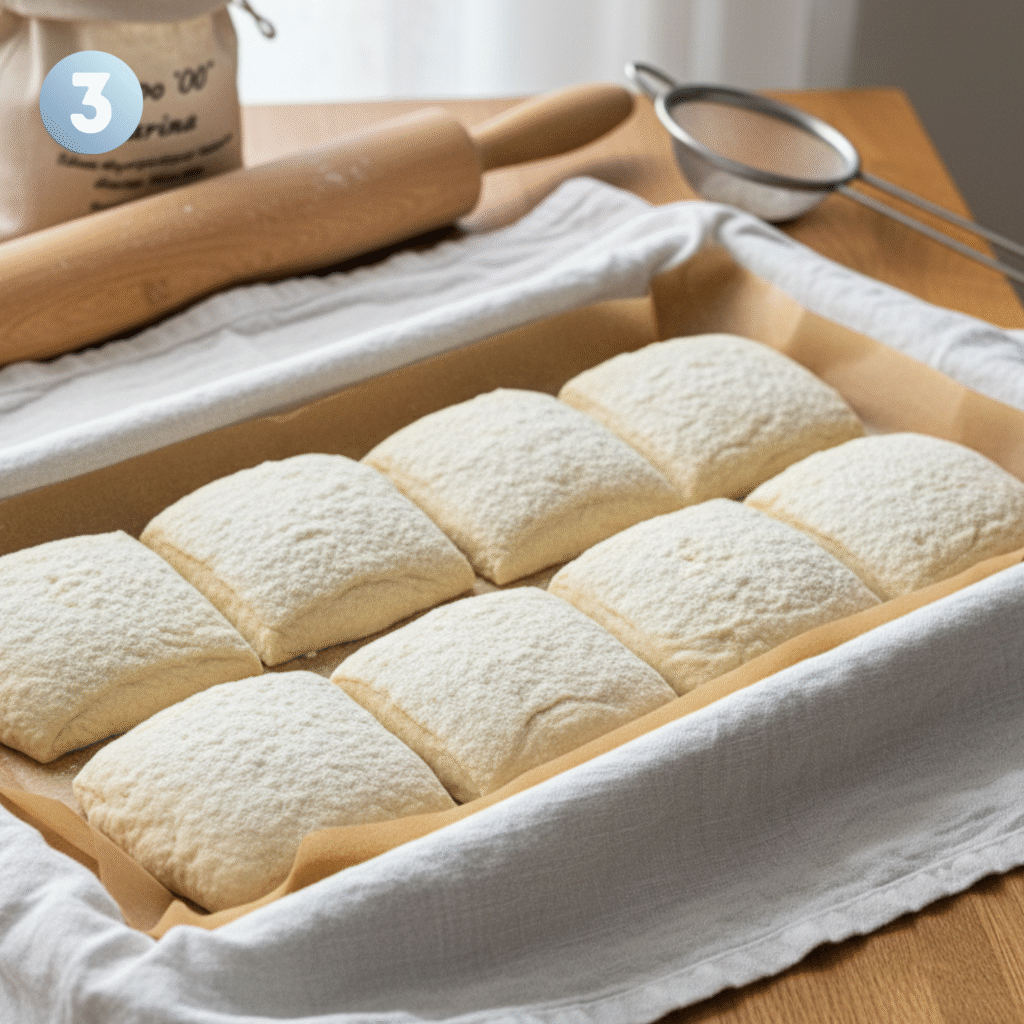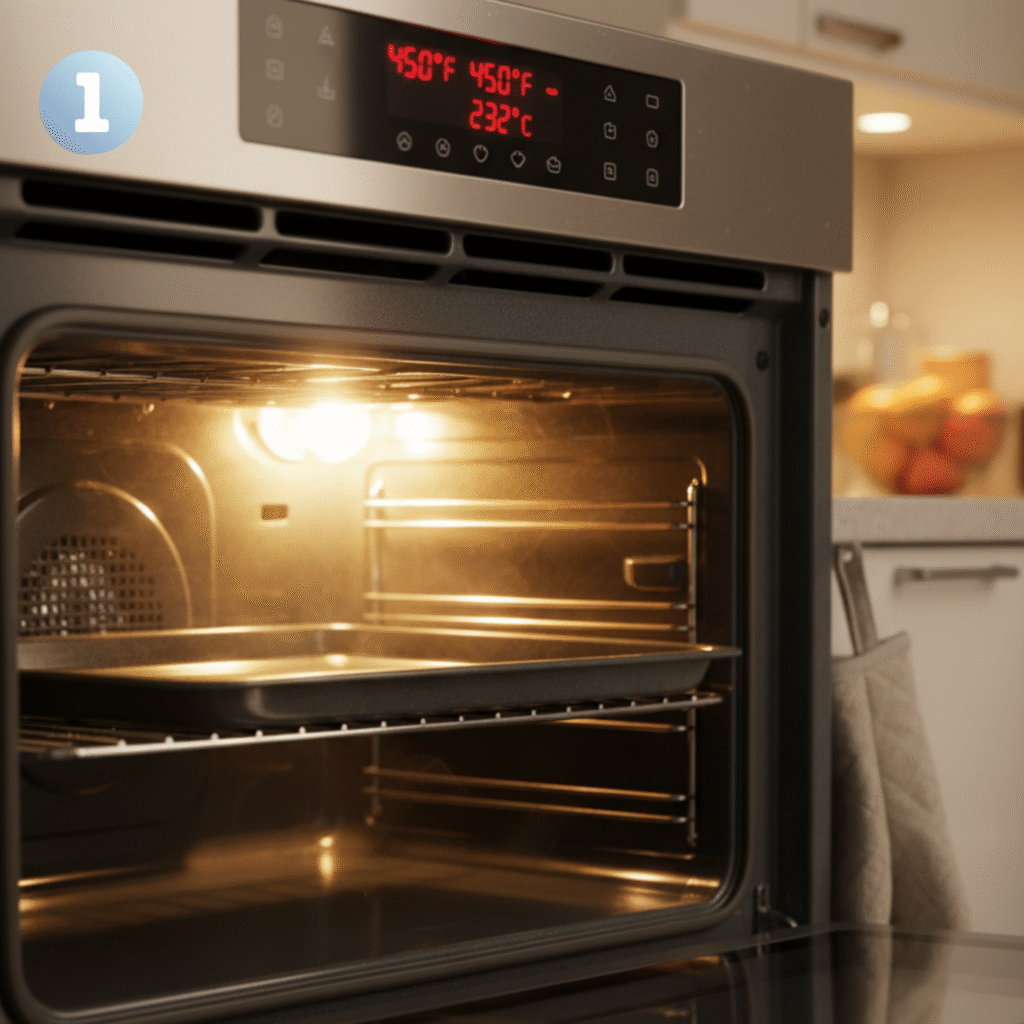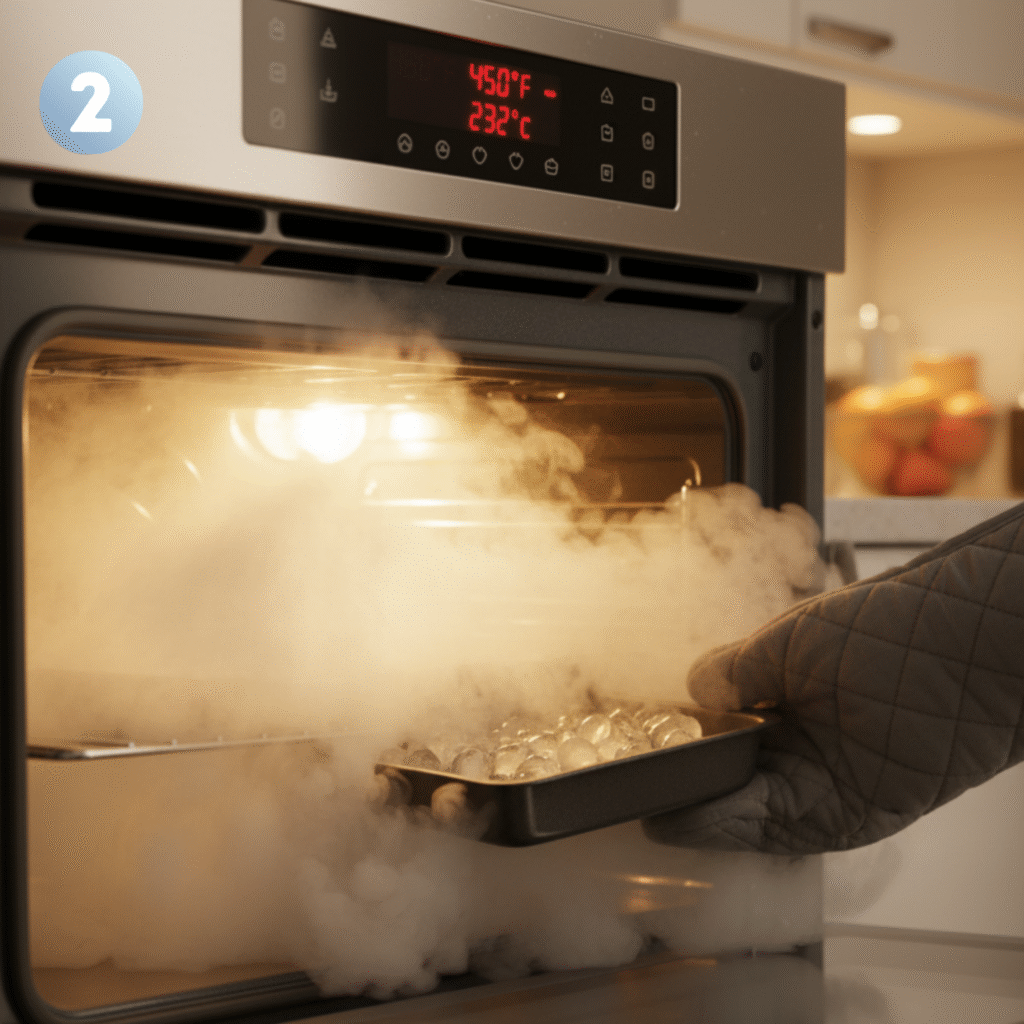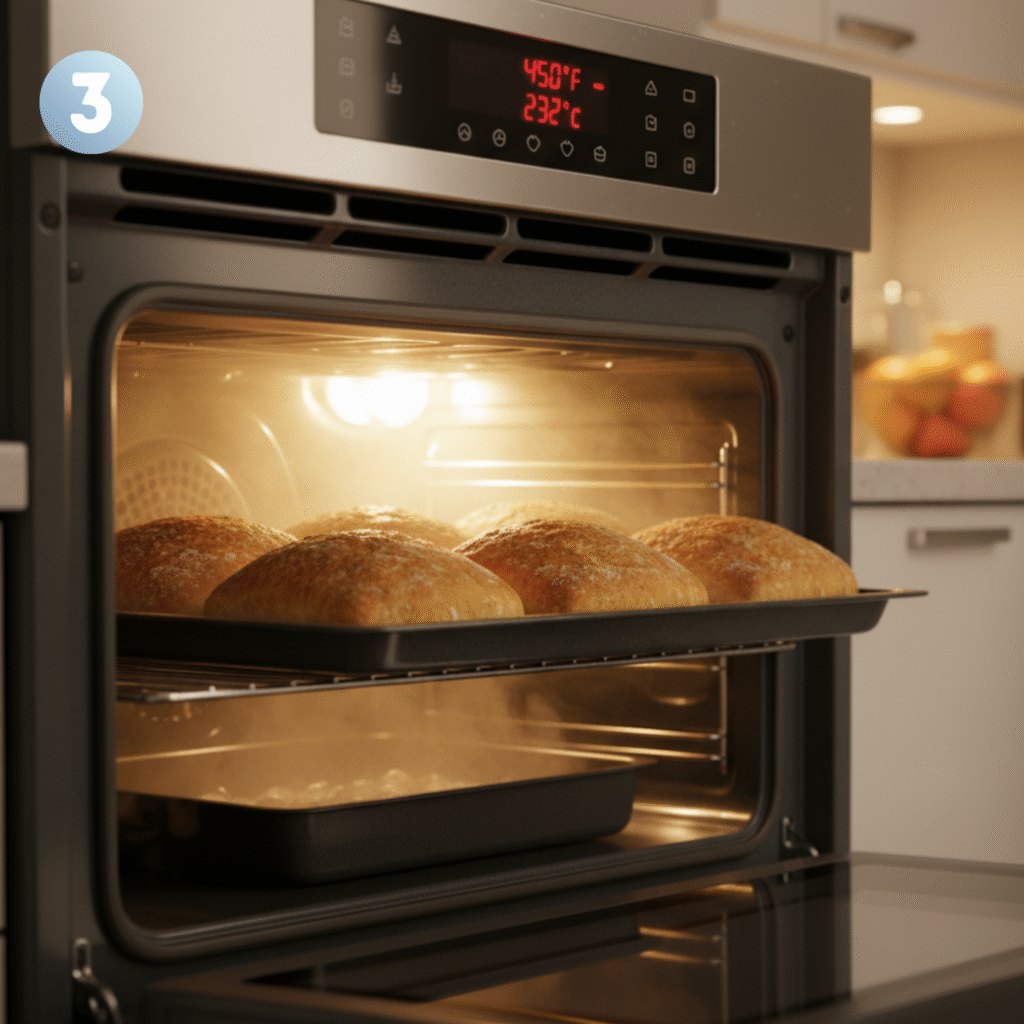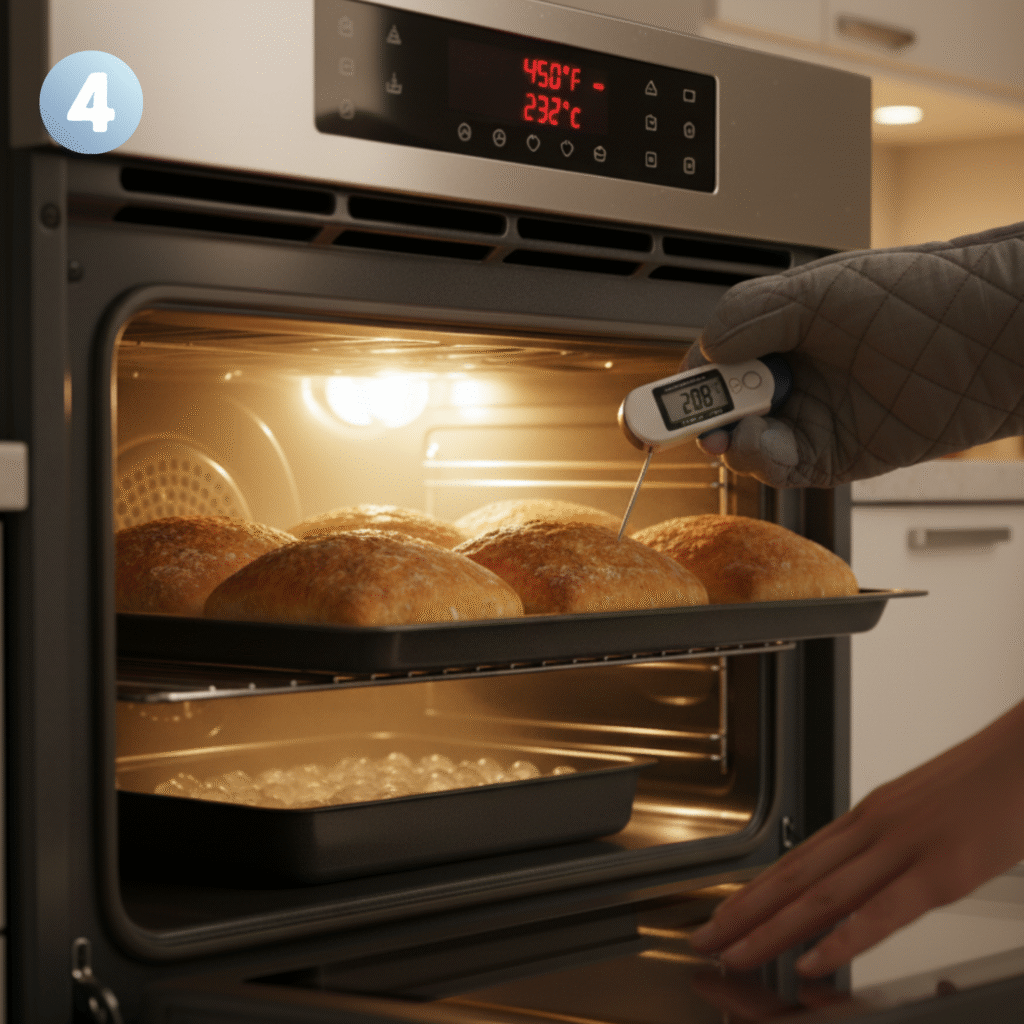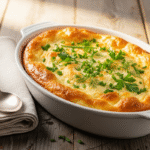Homemade ciabatta bread is versatile enough to pair with soups, salads, or even as the base for gourmet sandwiches. And if you love creating things from scratch—whether it’s homemade pizza, homemade cookies, homemade whipped cream, or even homemade ice cream recipes—this bread will be a rewarding addition to your kitchen.
Why You’ll Love This Recipe Homemade Ciabatta Bread
- Golden, crispy crust with a soft and airy crumb inside.
- Minimal ingredients—just patience and technique.
- Perfect for dipping in olive oil, serving alongside homemade ice cream for dessert nights, or layering with fresh toppings like you would on homemade pizza.
- Beginner-friendly, with detailed step-by-step instructions.
Ingredient
Day 1: Pre-ferment (Biga)
- 1 cup (130 g) bread flour
- ¼ teaspoon instant yeast
- ½ cup (120 ml) room-temperature water
Day 2: Main Dough
- 1 teaspoon instant yeast
- 1 cup (240 ml) warm water (about 100–110°F / 38–43°C)
- 2 ½ cups (325 g) bread flour
- 1 ½ teaspoons salt
- Olive oil for greasing
Instructions
Day 1: Make the Biga
- In a large bowl, whisk together the flour and yeast.
- Add water and mix until combined. The dough will be sticky.
- Cover and let rest at room temperature for 12–24 hours, until bubbly and aromatic.
Day 2: Prepare the Dough
- In another bowl, dissolve yeast in warm water. Add the biga, flour, and salt.
- Mix until the dough comes together—it will remain sticky, and that’s normal.
- Cover and let it rest for 30 minutes.
Stretch & Fold
To build gluten strength without heavy kneading:
- With oiled hands, grab one edge of the dough, stretch it upward, and fold it over itself.
- Rotate the bowl and repeat 8 times.
- Cover and rest 30 minutes.
- Repeat the process 3 more times, with 30-minute rests in between.
At this stage, the dough should be elastic, airy, and full of bubbles.
Shape & Proof
- Generously flour your work surface. Transfer dough gently to avoid deflating.
- Shape into a rectangle about 10×7 inches, then cut into 2 loaves or 8 small ciabatta rolls.
- Place on parchment paper, dust with flour, cover, and proof for 1 hour.
Bake
- Preheat oven to 450°F (232°C). Place a baking tray inside.
- For a crispy crust, add a pan of ice cubes to the lower rack to create steam.
- Transfer loaves to the hot tray and bake 20–25 minutes until golden brown.
- Bread is ready when it sounds hollow or reaches 205–210°F (96–99°C) internally.
Serving & Storage
- Cool loaves at least 45 minutes before slicing.
- Store in a paper bag at room temperature for 2–3 days, or freeze up to 1 month.
- Use slices for sandwiches, bruschetta, or dip into olive oil.
- For a full homemade meal, pair it with homemade pizza for dinner and homemade ice cream or homemade cookies for dessert.
Pro Tips
- Use bread flour instead of all-purpose for a stronger gluten structure.
- Don’t rush fermentation—the long rest gives ciabatta its flavor.
- Pair with savory toppings like pesto, roasted vegetables, or serve it alongside a bowl of soup.
- Impress guests by serving it with homemade whipped cream and berries as a sweet twist.
Final Thoughts
Homemade ciabatta bread proves that bakery-quality results are possible right in your kitchen. Just like making Homemade Ciabatta Bread Recipe Biga starter dough for homemade ciabatta bread resting in a glass bowl. or homemade cookies, it’s the patience and care that bring out the best flavors. Once you master this loaf, you’ll see why homemade baking is more satisfying than anything store-bought.
If you already enjoy homemade pizza nights, adding ciabatta bread to your repertoire will elevate your table to a whole new level of delicious.


